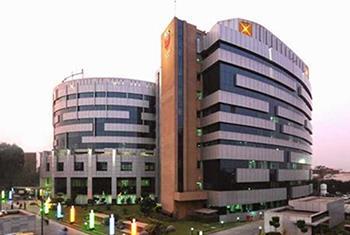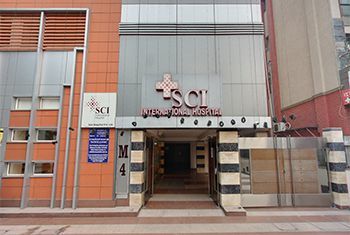What knee replacement implant materials are used during surgery?
The knee replacement prosthesis is usually made up of an alloy. These are created using titanium and cobalt-chromium. Sometimes, even ceramic knee implants are used. These implants wear off less quickly as compared to the alloy implants. So they are not required to be replaced for at least 20 years.
In ACL reconstruction, a Knitted or braided artificial graft is used. The graft is usually made up of polyacetal polyethylene, polyethylene, polyester or silk.
Materials that can be used in knee implants in India are:
Stainless Steel Implants
Stainless steel is not often used in India as knee replacement implants due to its limited ability to withstand corrosion in the human body in long-term use. It is mostly being used as temporary implants.
Cobalt-chromium Alloys Implants
Cobalt chrome is one of the metals used widely in India as knee implants. These metals are hard, tough, corrosion-resistant and biocompatible. The patients are very less allergic to the use of cobalt-chromium alloys.
Titanium and Titanium Alloys Implants
Implants, where high strength is not necessary, titanium and its alloys are used. Titanium and its alloys have a lower density as compared to other knee implant metals. The elastic nature of titanium and titanium alloys is lower than that of the other knee implants. So the titanium implant acts more like a natural joint and used widely in India. It reduces the risk of some complications like bone resorption and atrophy.
Uncemented knee implants
These implants are designed to attach directly to the bone. It doesn’t use cement. For fixation, these designs rely on bone growth into the implant surface. Most implant surfaces are textured or coated. It helps the new bone actually grows into the surface of the implant. The surface of the titanium is modified by coating the implant with hydroxyapatite. This bioactive surfacing agent will ultimately bond as the bone grows into it.
Tantalum Implants
Tantalum has the following biological and physical properties:
- flexibility,
- corrosion-resistant, and
- biocompatibility
A new porous substance named Trabecular Metal has been made of tantalum. It contains pores, the size of which makes this material very good for bone in-growth. This metal has an elastic nature which aids bone remodeling.
Polyethylene Implants
In a knee replacement, the tibial and patellar components are made of polyethylene. Polyethylene surfaces often suffered from wear in knee implants. The use of Ultra Highly Cross-Linked PolyEthylene or Ultra High Molecular Weight Polyethylene reduces the minimal wear. It enables the knee implants to last for a much longer time.
Zirconium alloy and all plastic tibial component:
Zirconium alloy is used in India as a new ceramic knee implant. This alloy is combined with an all-plastic tibial component. It replaces the metal tray and plastic insert used in other knee replacement surgeries. It is believed that this new knee could last for 20-25 years that is more than the effectiveness of cobalt-chromium alloy and polyethylene implants. The new combination can be lubricated. It results in a smoother and easier articulation through the plastic.
Zirconium alloy is biocompatible also. It also eliminates the risk to nickel-allergic patients because this new material contains no nickel.
Oxinium oxidized zirconium Implants :
Oxinium oxidized zirconium is used in India as knee implants since 2001. It is a transformed metal alloy. It has a ceramic bearing surface. It contains zirconium and niobium alloy. These alloys were oxidized to convert the surface of the material into zirconia ceramic. It is two times harder than cobalt-chromium alloys that half the friction. It performs with higher quality and lasts for a longer time.













